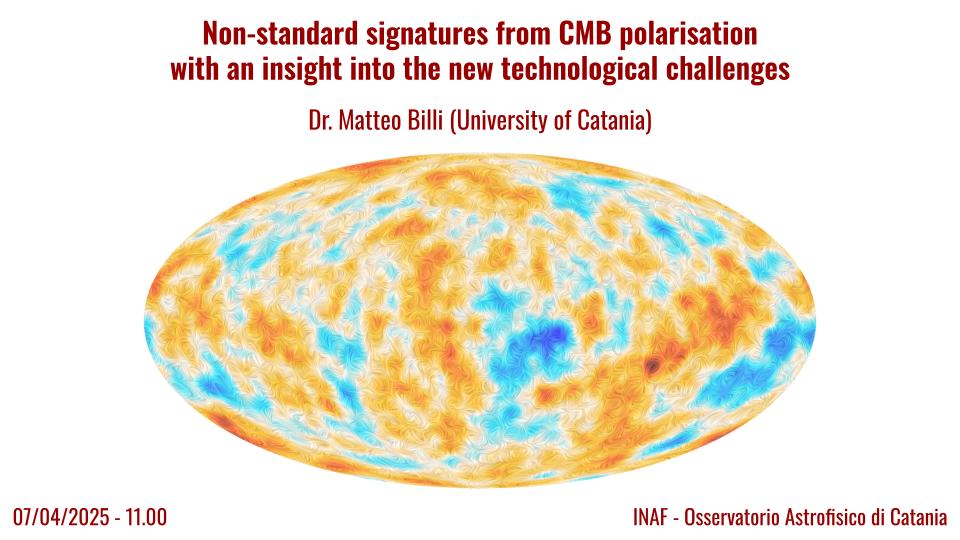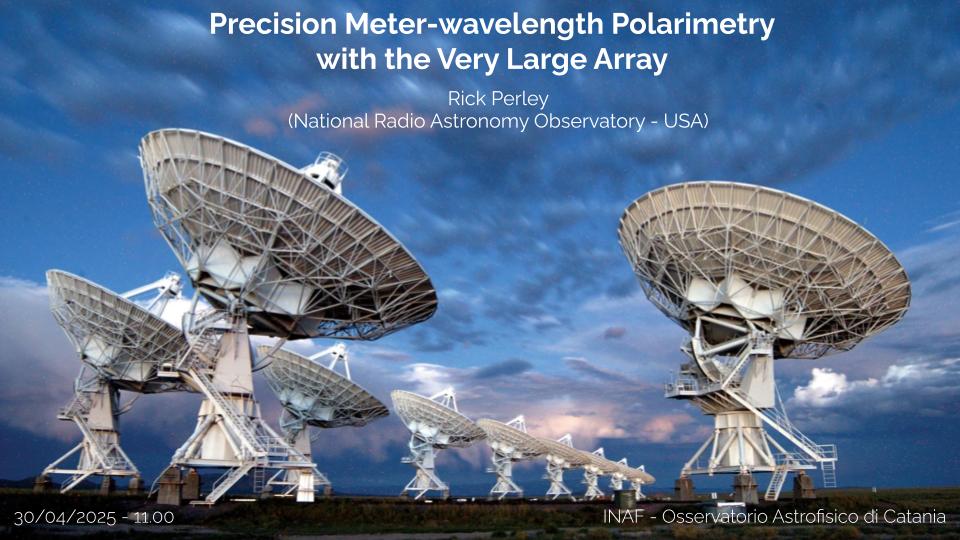Non-standard signatures from CMB polarisation with an insight into the new technological challenges
Sede A. Riccò Via Santa Sofia 78, CataniaIn this seminar, I will focus on non-standard signatures from CMB polarisation that may indicate the existence of new phenomena beyond the standard models of cosmology and particle physics, from both theoretical and observational perspectives. ESA's Planck mission has observed CMB temperature anisotropies at the cosmic variance limit, but polarisation remains to be further investigated. CMB polarisation data are important not only because they contribute to provide tighter constraints on cosmological parameters but also because they allow the study of physical processes that would be excluded if only the CMB temperature maps were considered. I use polarisation data into account to assess the statistical significance of the anomalies currently observed only in the CMB temperature map, and to constrain the Cosmic Birefringence (CB) effect, which is expected in parity-violating extensions of the standard electromagnetism.
Measuring CMB polarisation is technically challenging because the polarised signal is much fainter than the temperature signal, and accurate polarisation estimates require exquisite control of systematic effects. To investigate the impact of spurious signals in upcoming CMB polarisation experiments, I present a study of the interplay between half-wave plate (HWP) non-idealities and the beams of the instrument for the next generation of CMB experiments, with an insight into how this instrumental contamination affects the measurement of the cosmic birefringence effect.

